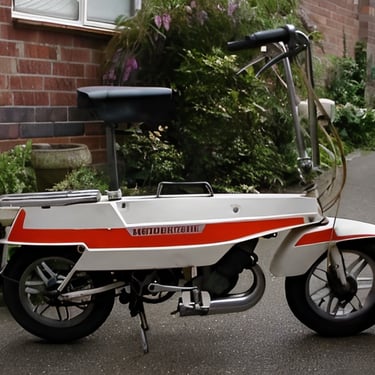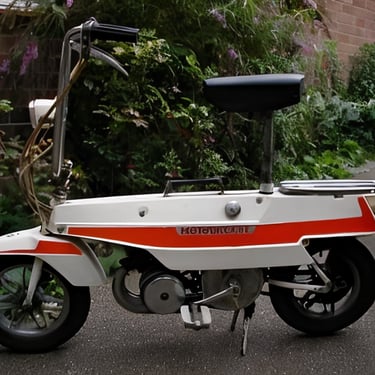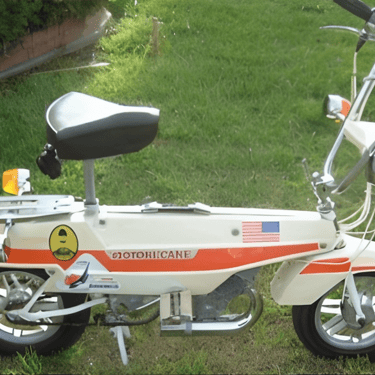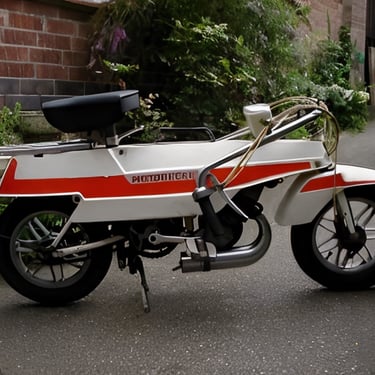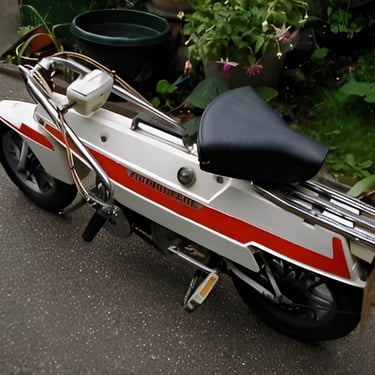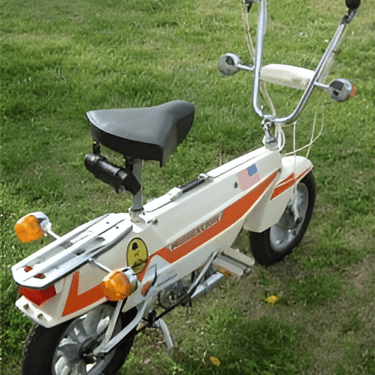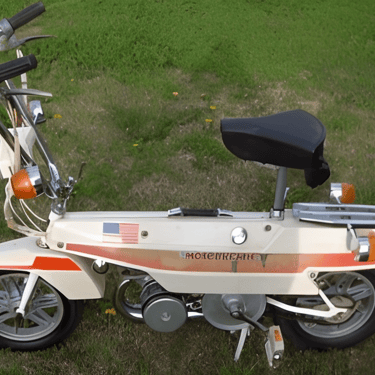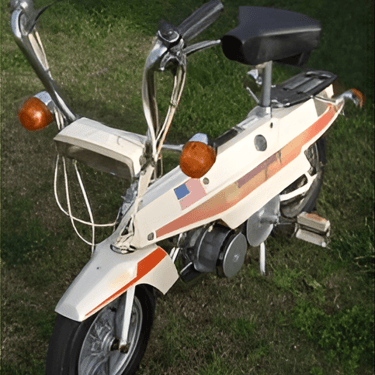The 1971 Motobecane X1 Folding Moped: A Pioneer of Portable Transportation
The Motobecane X1 was an innovative folding moped introduced in 1971 that addressed the growing need for flexible urban transportation solutions.
FRANCE TWO STROKE1970'SMOTOBÉCANE FOLDING MOPEDS
12/20/20243 min read
The 1971 Motobecane X1 Folding Moped: A Pioneer of Portable Transportation
Introduction
In the early 1970s, as urban mobility needs evolved, French manufacturer Motobecane introduced an innovative solution that would capture the imagination of commuters worldwide - the X1 folding moped. Released in 1971, this ingenious vehicle represented a perfect fusion of practicality and engineering prowess, offering the convenience of a bicycle with the power of a motorized vehicle. The X1 stood as a testament to Motobecane's reputation for innovation, building upon their successful history of manufacturing both bicycles and motorized two-wheelers since 1923. This unique folding moped addressed the growing need for flexible transportation solutions in increasingly crowded urban environments, providing a compact yet capable vehicle that could be easily stored in small apartments or carried on public transportation.
Historical Context
The development of the Motobecane X1 folding moped emerged from a fascinating period in transportation history. The late 1960s and early 1970s saw a surge in demand for versatile urban transportation solutions, particularly in European cities where space was at a premium. Motobecane had already begun exploring the concept of portable powered transportation with their earlier PliCady M1P model, which served as a crucial stepping stone toward the X1's development.
The X1, launched in 1971, represented a significant evolution in Motobecane's portable moped lineup. It arrived during a time when fuel prices were rising and urban congestion was becoming a growing concern across Europe. The company's timing proved impeccable, as the X1 offered a solution that combined the economy of a moped with unprecedented portability.
What set the X1 apart from its predecessors was its sophisticated folding mechanism, which built upon lessons learned from the PliCady series while introducing new innovations. This development came at a time when folding vehicles were gaining traction, but few manufacturers had successfully combined the convenience of a folding frame with the utility of a powered vehicle.
Technical Specifications
The 1971 Motobecane X1 was an engineering marvel for its time, featuring a compact yet capable 50cc single-cylinder two-stroke engine. This power plant was specifically designed to balance performance with portability, producing enough power to achieve a maximum design speed of 33 km/h (approximately 20 mph) - making it ideal for urban commuting while remaining within moped regulations of the era.
One of the X1's most impressive features was its remarkably light dry weight of just 28 kg (62 lbs), achieved through careful engineering and material selection. The moped carried a 2-liter fuel tank, providing adequate range for urban use while maintaining its lightweight characteristics. The compact dimensions when folded made it particularly practical for storage and transport.
The folding mechanism, a crucial technical achievement, utilized a central hinge system that allowed the frame to fold in half. This engineering solution maintained structural rigidity while riding but could be quickly collapsed for storage or transport. The handlebars could also be folded down, further reducing the moped's footprint when not in use.
The X1 featured 9-inch by 2.5-inch tires, selected to provide a good balance between ride comfort and compact size. The wheel size was carefully chosen to maintain stability while allowing for the folding capability that made the X1 unique in its class.
Design Features
The X1's design was a masterful blend of form and function, with every aspect carefully considered to serve its dual purpose as both a practical moped and a portable vehicle. The folding system was the centerpiece of its design, featuring a robust central hinge mechanism that could be operated quickly and easily. When unfolded, the frame locked securely into place, providing stability and safety comparable to traditional non-folding mopeds.
The handlebars incorporated a clever folding mechanism that allowed them to collapse alongside the frame, creating an impressively compact package. This attention to space-saving details extended to the pedals, which could also be folded to reduce the vehicle's overall width when stored.
The X1's seating position was designed for comfort despite its compact nature, with a well-padded seat that provided adequate support for urban commuting. The overall aesthetic was distinctly modern for its time, with clean lines and practical touches like integrated lighting and a simple but effective instrument cluster. The moped's frame was finished in durable paint, typically available in practical colors that reflected its utilitarian purpose while maintaining a sophisticated appearance.
Legacy and Collectibility
The Motobecane X1 holds a special place in transportation history as one of the earliest successful attempts at creating a truly portable powered two-wheeler. Its influence can be seen in many modern folding vehicles, from electric bikes to contemporary folding scooters. The X1's innovative approach to solving urban mobility challenges was ahead of its time, predating the current trend of micro-mobility solutions by several decades.
Today, the 1971 Motobecane X1 is highly sought after by collectors, particularly those specializing in unique mopeds and innovative transportation solutions of the 20th century. Well-preserved examples are increasingly rare, and those that do surface at auctions or specialist dealers command significant attention from enthusiasts. The model's historical significance, combined with its innovative design and relative scarcity, has contributed to its rising value in the collector market.
The X1's legacy extends beyond its collectible status; it represents a pivotal moment in the evolution of personal transportation, demonstrating that powerful, practical vehicles could also be portable. This philosophy continues to influence modern vehicle design, particularly in the growing market for folding electric bikes and scooters, making the X1 not just a historical curiosity, but a prescient glimpse into the future of urban mobility.
